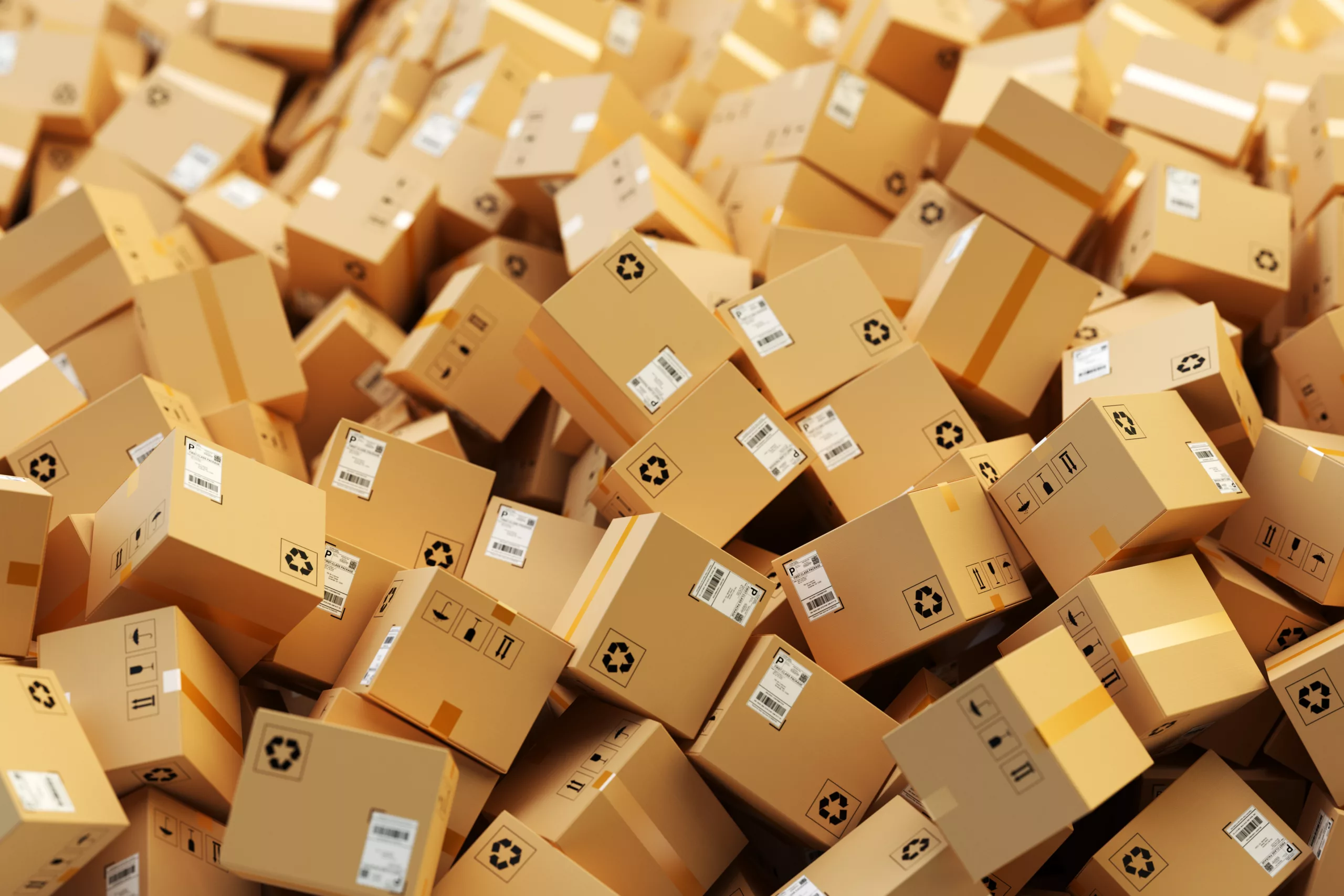10 things you could do differently with your packaging in 2023

Happy New Year! It’s as if we’ve blinked, Christmas is over, and the New Year is here… And with a new year comes new possibilities.
At Macfarlane Packaging we always think about what we could do differently to the last in the coming year in January. It’s a great time to assess how peak went, spot bottlenecks, and implement initiatives to achieve new goals.
That’s why this blog looks at the 10 things you could do differently with your packaging in 2023! A good place to start is considering what the packaging trends will be in 2023….
Blog Contents
- 1.
- 2.
-
3.
10 things you could do differently with your packaging in 2023
- 3.1.
- 3.2.
- 3.3.
- 3.4.
- 3.5.
- 3.6.
- 3.7.
- 3.8.
- 3.9.
- 3.10.
- 4.

A quick look at packaging trends for 2023
In December we published a blog about the packaging trends people can expect in 2023. So, what were they?
Based on the current economic climate, as well as consumer pressures and supply chain challenges, the packaging trends we predicated are:
Reducing operating costs through packaging – it should come as no surprise that businesses will want to control operating costs in the tough economic climate. However, many people will not always pinpoint packaging as a big business cost. But the right packaging solution can drastically cut operating costs in a number of areas, including warehousing and transport, as well as labour costs and damages. So, reducing costs associated packaging will be a key trend in 2023!
Putting carbon reduction at the heart of packaging strategies – sustainability has become more and more important to businesses, as well as consumers. In fact, 27% of consumers reported that they won’t buy from companies who don’t use sustainable packaging. On top of this, more businesses are focusing on serious carbon reduction, which is a key in the fight against climate change. When it comes to packaging, materials matter, but so do the carbon emissions associated with the manufacturing and use of the packaging. In 2023, we predict more businesses will consider the total carbon impact of their packaging throughout the supply chain.
Using connected packaging to enhance the customer experience & innovate – as brands compete for share of voice, looking for ways to differentiate is key. Connected packaging presents the opportunity to get their digital and physical customer journey to align and engage with consumers. Looping customers back into a brand through an interactive experience also offers the opportunity to collect more customer behaviour data, that allows businesses to further personalise customer experience and offers, which is why it’s a trend we expect to see more of this year.
Digitising packing processes through packaging automation – using automated packing machinery can help businesses tackle labour shortages, cope with seasonal demand and future proof for growth. All great reasons why increased use of packaging automation is one of our packaging trends for 2023.
Are any of these trends on your agenda for the year? With these trends in mind, now let’s consider what you’re aiming for in 2023 and what you could do differently with your packaging.

What will you protect this year?
If you’ve visited our blog before, you know we often talk about the role of packaging… Its primary purpose it to protect things.
On a basic level, the transit packaging you use will protect your products. But have you ever considered how your packaging can help you protect lots of areas in your business?
The right packaging can help you protect:
- Your products
- Your profit margins
- Your customer experience
- Your brand
- The environment
Plus, lots more! So, what will you be protecting this year with your packaging? Here are 10 things you could do differently with your packaging in 2023 and how they can help protect your business and your products!

10 things you could do differently with your packaging in 2023
1. Review your packaging process to identify bottlenecks
If you’ve just been through a seasonal spike in demand, January is a great time to take stock and review your packing processes. This will help you identify any bottlenecks in your packing processes, such as pinch points like hard to assemble packaging or points that need multiple touches.
A great thing to do differently in 2023 could be to introduce best practice packing guidelines. Giving your team clear instruction about how to pack effectively can help you protect productivity and optimise how your team spend their time. This is great for futureproofing for spikes in demand too, as it can help you quality-control what packaging materials are used when and where. Packing guidelines can also help you reduce waste, which is great if you’re trying to reduce your environmental impact and protect the environment.
2. Re-engineer your packaging to reduce cubage or improve palletisation
Is your packaging as space efficient as it could be? Re-engineering your packaging to reduce its cubage or improve your product palletisation can be a big win.
Smaller, more space efficient packaging can have a knock-on effect throughout your supply chain. If you use couriers to deliver your product, optimised parcel cubage can help you reduce your dimensional weight and delivery costs. For those of you that palletise your products, increasing your pallet yield can drastically cut the fuel you need to deliver products and therefore reduce the emissions you’re creating during deliveries. A win for you and the environment.
In all cases, if your packaging is smaller, you will save on storage space. In a time where warehouse space is at a premium, reducing how much space you need can help generate savings. This is worth bearing in mind if you are company that will be affected by the rise in business rates on large distribution warehouses.
3. Adopt clear, recognisable recycling labelling
Did you know that under the forthcoming Extended Producer Responsibilities (EPR) businesses affected will have to adopt clear, recognisable recycling labelling?
The labelling required is expected to be binary – which means your packaging will needed to be labelled as either recyclable or not recyclable.
While there’s no date set for EPR to be introduced, it’s worth getting a head start on this now. Our own unboxing research shows that over 90% of consumers want to recycle, but 11% of packages still arrive without recycling labels. Making things as clear as possible will help ensure more of your packaging is recycled at the end of its life too – helping protect the environment from pollution.
4. Introduce smart or connected packaging
Smart or connected packaging can work for both business-to-consumer (B2C) or business-to-business brands (B2B) companies.
Smart packaging that uses barcodes, RFID or NFC technology can be used to control industrial goods and tracking throughout the supply chain. Particularly useful if you want to monitor the conditions your goods are kept in – for example if you’re in pharmaceutical or food distribution and need to know what the in-container temperature is.
On the flip side, connected packaging is a great way for brands to connect with their customers. Simple QR codes can launch instruction videos or a simple website-based experience through full immersive gamification or augmented reality. This can act as a great differentiator in a competitive market, can be used to educate your customers and even help you create repeat sales through promotions. All of this can help you protect your customer experience and your brand!
5. Automate labour intensive packing processes
If you want to protect your productivity in 2023 and look for ways to combat labour shortages, packaging automation could be the answer.
You can automate almost any packing process from bagging and boxing through to sealing, filling, and conveying. There are numerous benefits such as controlling material use, increasing pack times and throughput and even future proofing your operation, as well as controlling operating costs longer term. Click here read our quick packaging automation guide.
6. Make simple sustainable packaging switches
Approaching sustainable packaging can sometimes seem daunting. There are lots of choices – is paper better than plastic? Which material will reduce your carbon footprint? Will it cost more than your current packaging?
That’s why it can sometimes be best to try simple changes first. A small but effective change can be swapping from plastic packing tape to paper tape. Swapping to paper tape helps you remove plastic from your operation, increases your packs recyclability and can help you use less sealing material.
If you’re not sure where to start, tools like our Packaging Optimiser can help you see how changes can impact your packing operation both financially and environmentally by showing you the carbon impact simple sustainable swaps can make.
7. Switch up your packing area for maximum efficiency
Is your packing areas as efficient as it could be? Often, packing benches and locations evolve as your business grows, so what once worked may no longer be fit for purpose.
Taking stock of where your packing materials are stored and how they’re organised on workstations can have a big impact on your productivity. Keeping packing materials no higher than shoulder height can encourage faster packing and implementing “water spiders” (team members with trollies who re-stock materials) can keep downtime to a minimum, protecting your productivity.
8. Increase recycled content in your packaging
Looking for extra ways to cut your carbon footprint? Increasing the recycled content in your packaging is a great way to remove emissions from your supply chain and support your sustainability goals. That’s why we have a wide range of recycled content packaging and our teams can provide dedicated support around eco-friendly packaging!
Packaging materials that make use of recycled content help conserve natural resources and cut emissions during the manufacturing process compared to the use of virgin materials. For example, virgin paper processing CO2e is 100kg per tonne higher than recycled material processing from a closed loop source.
On top of this, if you’re using recycled content plastic materials, ensuring they contain at least 30% recycled content can help you mitigate the plastic packaging tax.
9. Optimise how you buy packaging
Does coordinating the purchasing of your packaging take up a lot of your time? If you’re working with multiple SKUs or a range of packaging suppliers, packaging procurement can be lengthy and complex.
Optimising how you buy your packaging can reduce your admin in 2023 and give you back valuable time for other tasks. Consolidating your packaging materials with one packaging distributor can give you access to local and global packaging manufacturers without the hassle of dealing with multiple contacts. You can also take advantage of stock holding and management, which can help release space and cashflow!
Accessing e-trading software that integrates with your systems and generates reports can make packaging management a breeze too.
10. Get granular with your packaging product data to prepare for new legislation
Do you know everything about the packaging products you use? For example:
- The weight of the packaging
- The recycled content
- The material type
- How it’s recycled
- If it can be reused
- The CO2e of the pack
- Usage across all packaging SKUs
Getting your packaging data in order will help you prepare for updated packaging waste reporting under Extended Producer Responsibilities as well as any disclosures you will have to make if you’re in scope of the upcoming EU Corporate Sustainability Reporting Directive.
It can also help you become more effective at managing your packaging supplies and help you spot inconsistencies or identify opportunities for improvement. This can help you protect your margins as well as protect your reputation from any legal repercussions.

Help making changes to your packaging in 2023
The experts at Macfarlane Packaging can help you make changes to your packaging that protect your business and keep costs down in 2023. Get in touch to learn more.
